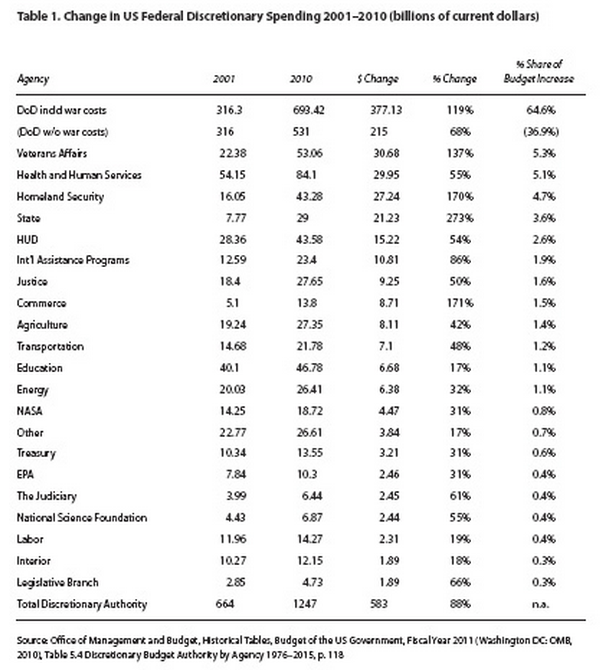Although Republicans and President Obama are said to disagree about economic policies, there is one initiative that they both enthusiastically support: free trade agreements. President Obama single-handily resurrected the free trade agreements with Korea, Panama, and Colombia from political oblivion; they were ratified by the U.S. Congress in October.
Now, he is eagerly pursuing a new multilateral agreement known as the Trans-Pacific Free Trade Agreement (involving Australia, Brunei Darussalam, Chile, Malaysia, New Zealand, Peru, Singapore, Vietnam, and the United States). Significantly, as Public Citizen reports, “a leaked document revealed that the Obama administration signed a special pact to keep all documents relating to the Trans-Pacific Free Trade Agreement negotiations secret.”
One might ask why the leaders of so many countries are anxious to sign such agreements, agreements which not only lower tariffs but also strip away the powers of governments to regulate international investment, production, and capital flows.
One answer is the enormous economic power of transnational corporations (TNCs), the main beneficiaries of these agreements. According to the United Nations Conference on Trade and Development:
TNCs worldwide, in their operations both at home and abroad, generated value added of approximately $16 trillion in 2010, accounting for more than a quarter of global GDP. In 2010, foreign affiliates accounted for more than one-tenth of global GDP and one-third of world exports.

The largest transnational corporations are from developed capitalist countries. These corporations also tend to be among the largest and most powerful firms in their respective home countries. At the same time, as the table below shows, their international operations now account for a majority of their assets, sales, and employment. Looking at all TNCs, the United Nations reports that the value added by their foreign affiliates generated approximately 40% of their total value added in 2010, up from 35% in 2005.

The estimates of TNC production cited above, although impressive, actually understate transnational control over global economic activity. At one time, TNCs only engaged in international production through establishment of foreign affiliates. In some cases, the parent company and its foreign affiliates operated relatively independently, each serving a different market.
Now, transnational corporations generally rely on complex cross border production networks that involve the linking of production across many countries, with final sales often taking place in still other countries. Most importantly, these networks often include “independent” partner firms that undertake various activities according to an overall transnational corporate strategy. While some of the partner firms may themselves be transnational corporations, many are not, which means that TNC controlled activity is greater than the combined activities of parent and affiliate firms.
Transnational corporations use a variety of so-called “non-equity modes” (NEMs) of control to direct the operations of their partner firms, with contract manufacturing and service outsourcing among the most important. Cross border activity involving NEM relationships is conservatively estimated to have generated over $2 trillion of sales in 2010. The United Nations reports that some 18–21 million workers are directly employed in firms operating under NEM arrangements. Around 80 per cent of NEM-generated employment is in developing and transition economies.
As the following figure reveals, cross border production activity anchored by NEM relations now dominates a number of key export industries. For example, NEM production now accounts for more than 50% of all toy, footwear, garment and electronics exports.

The production of the iPhone offers one of the best examples of the logic and operation of these transnational corporate controlled cross border production networks. As the Asian Development Bank explains:
iPhones are designed and marketed by Apple, one of the most innovative U.S. companies. Apart from its software and product design, the production of iPhones primarily takes place outside the US. Manufacturing iPhones involves nine companies, which are located in the PRC, the Republic of Korea (hereafter Korea), Japan, Germany, and the US. The major producers and suppliers of iPhone parts and components include Toshiba, Samsung, Infineon, Broadcom, Numunyx, Murata, Dialog Semiconductor, Cirrius Logic, etc. All iPhone components produced by these companies are shipped to Foxconn, a company from Taipei,China located in Shenzhen, PRC, for assembly into final products and then exported to the US and the rest of the world.
Not surprisingly, the division of profits, as shown below, reflects the overall hierarchy that structures this and other cross border production networks.

The importance of cross border production networks to transnational corporate profitability helps to explain why these corporations are such strong supporters of free trade agreements. And, although I have focused on manufacturers, transnational retailers which sell the products produced by these networks and financial service companies which underwrite both the production and consumption of these products are also major beneficiaries and therefore powerful advocates.
The operation of these networks, the majority of which are centered in East Asia, have greatly contributed to the growth of global imbalances, marked by East Asian trade surpluses and U.S. trade deficits. These imbalances were papered over, and global capitalist accumulation sustained only because of the debt-driven housing bubble which financed U.S. consumption.
The collapse of the bubble has led many analysts to call for a rebalancing of Asian and U.S. economies. However, rather than address this need, governments throughout the world, responding to dominant capitalist interests, continue to pursue new free trade agreements, a pursuit that if successful will only intensify existing economic and social problems and make needed changes harder to achieve.





















